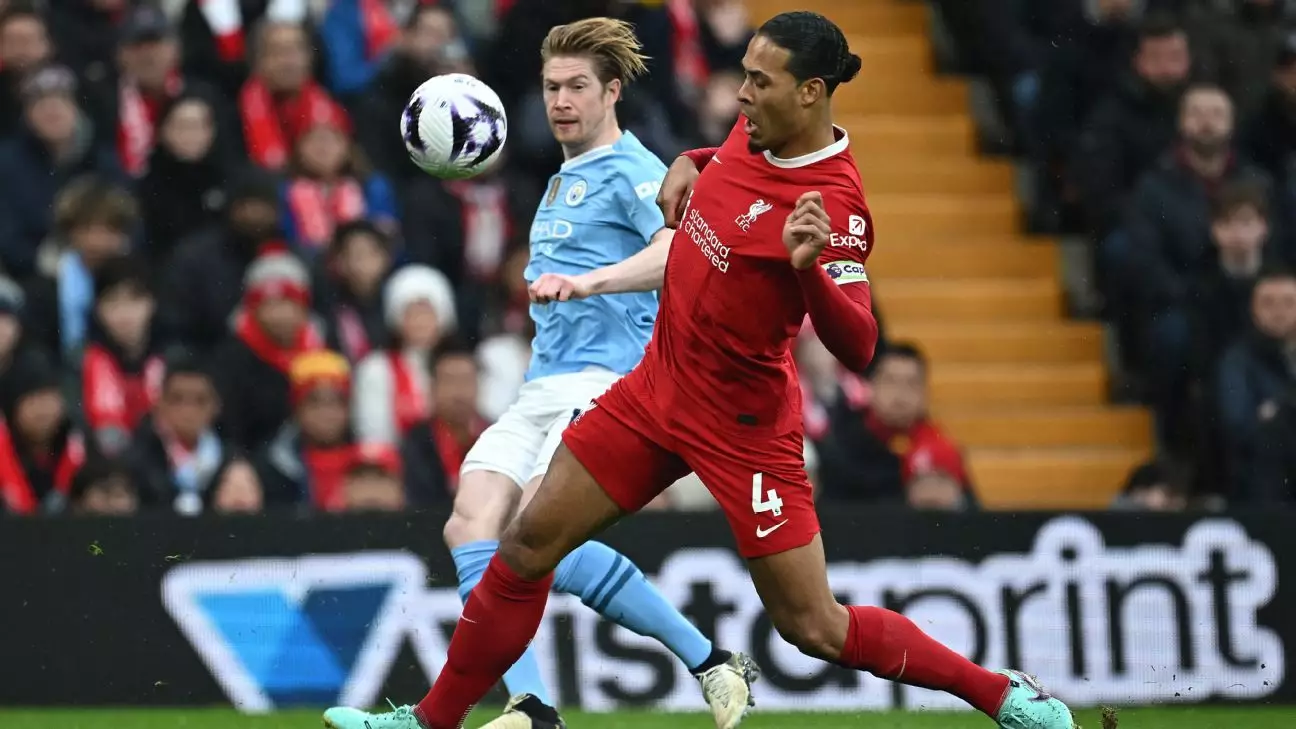As the January transfer window approaches, a pivotal question arises for leading Premier League clubs: how do they manage aging star players nearing the end of their contracts? Prominent figures such as Mohamed Salah, Virgil van Dijk, and Kevin De Bruyne encapsulate the magnitude of this dilemma, as they have each been instrumental in their respective teams’ achievements. Yet, as they enter the twilight of their careers, the uncertainty surrounding their futures looms large. The intricate web of factors influencing contract decisions unveils a delicate balancing act, demonstrating that age, performance, and tactical needs must be weighed meticulously.
Mohamed Salah, 32, boasts remarkable stats this season, being joint-top in the Premier League scoring chart alongside Bukayo Saka. His contributions to Liverpool’s title chase and Champions League aspirations are invaluable. Similarly, Virgil van Dijk, at 33, continues to hold a commanding presence at the back, having overcome serious injuries to establish a robust fitness regime. In contrast, Kevin De Bruyne, also 33, struggles with fitness issues that raise concerns about his longevity at Manchester City.
Despite their stellar contributions, all three players face contract negotiations underpinned by a crucial question: what future value will they bring to their clubs? As evident in the football landscape, many players enjoy a sharp decline after hitting the age of 30. For clubs like Liverpool and Manchester City, retaining players who might transition from pivotal assets to prohibitively expensive liabilities requires profound foresight and data analysis.
Evaluating whether a player deserves a contract extension is a complex decision fraught with variables. Factors such as squad depth, potential market alternatives, and individual performance trajectories contribute to the decision-making process. The ability to analyze a player’s fitness and performance data provides critical insights for management. If the analytical data reveals that performance is on a downward slope, the rationale for a retention may diminish.
Historically, players like Cristiano Ronaldo and Lionel Messi have defied age-related decline, showcasing elite performance well into their late 30s. However, examples abound of stars like Wayne Rooney and Fernando Torres, whose careers fell off significantly after turning 30. The divergence in career trajectories serves as a pertinent reminder that past performances do not guarantee future success.
In the Premier League’s high-stakes environment, clubs must approach contract negotiations with caution. Players entering their 30s can be hit or miss, and the financial implications of contract extensions can hinder overall squad flexibility. In particular, clubs must ask themselves: “What if these aging stars aren’t capable of maintaining their current levels of performance?”
For instance, the precarious case of Ilkay Gündogan, who was released by City only to return after a successful stint at Barcelona, showcases that sometimes, clubs must risk letting a player go while also avoiding potential regret over a long-term contract. A decision based on short-term emotional ties rather than calculated metrics can backfire.
Liverpool’s treatment of Sadio Mané, who was deemed expendable at 30 years old, illustrates another layer of the dilemma. The club did not regret allowing a transitioning player to depart, reinforcing the notion that retaining aging players can sometimes lead to unnecessary complications.
To navigate this conundrum, clubs must adopt a dual strategy that factors in both performance metrics and player sentiment. Initiating conversations with players about their long-term aspirations can provide clarity. While some may seek lucrative contracts in less competitive leagues, others prioritize comfort and stability over a final payday.
In certain cases, reaching a compromise could serve as the linchpin between both parties. As contracts expire, negotiations may yield outcomes where a player agrees to a pay cut in exchange for a shorter deal, allowing clubs to plan their future more effectively. The last thing clubs wish to encounter is being shackled with aging stars on inflated wages who contribute minimally to the squad.
As Liverpool and Manchester City navigate the uncertainty surrounding their future with key players like Salah, van Dijk, and De Bruyne, it is clear that the coming months will shape the landscape of the Premier League. The careful balancing act of retaining talent while ensuring long-term viability is at the heart of these monumental decisions. The synthesis of past contributions, current performance data, and projected future outputs must lead clubs toward informed conclusions. Ultimately, they must remain vigilant against the ticking clock of age while assuring their squads are in prime condition to face the evolving competitive arena.

